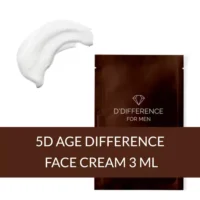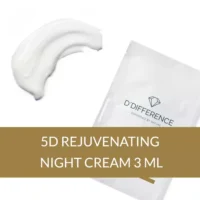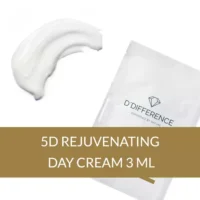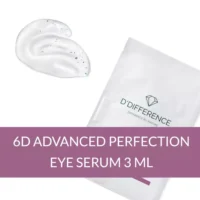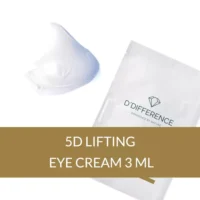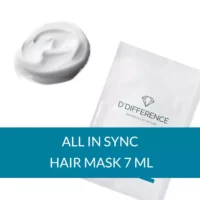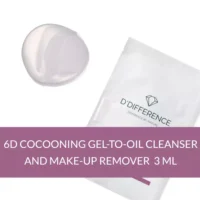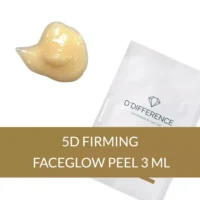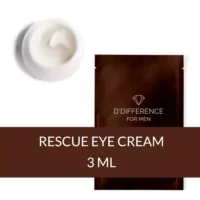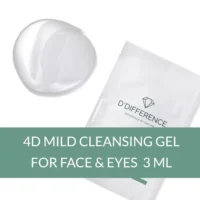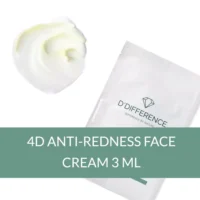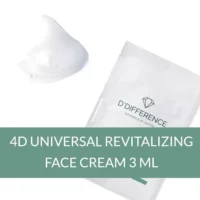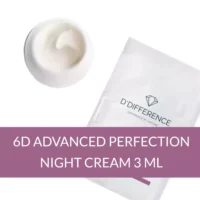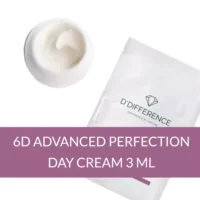UNCOVER YOUR SKIN
SKIN is our body’s largest organ covering the entire body. The skin protects us against environmental influences (e.g. heat, light, injury, infection, etc), it regulates body temperature, stores water and fat, prevents water loss and entry of bacteria, and also acts as a sensory organ.
Do you know that…
- Every adult person has about 2 m² of skin;
- The average weight of the skin is about 14 kg, forming about 20% of the total body mass;
- The skin contains about 25% of the body’s entire water storage;
- One square centimeter consists of:
-
- 600 000 skin cells
- 5000 sensory cells
- 4 meters of nerves
- 100 sweat glands
- 1 meter of blood vessels
- 15 sebaceous glands
- 5 hairs
- 150 000 melanocytes
Skin’s normal pH level is 5-6. In order to ensure the skin’s maximum protection ability, the pH level should be kept in this range. Talking about the oh-so-popular acids (yes, we love them too!), the variation in the pH-value is what decides the strength of the product. The lower the pH, the stronger the exfoliation. All acids exfoliate, even when they are in leave-on products.
The skin’s condition depends on different factors. Choosing the right skin care product is one of the key factors in keeping your skin in good shape. High-quality cosmetics can prevent your skin from ageing, protect the skin against environmental damages (including UV-radiation) and alleviate skin problems – flaking, acne, eczemas, etc.
The skin is made up of 3 layers – epidermis, dermis and hypodermis – each of them performing a specific function.
The outer layer of the skin is called EPIDERMIS which functions as a barrier between our body and the environment. Its thickness varies from 0,05 mm on the eyelids to 1,5 mm on the palms and soles of the feet, and it is formed by a thin layer of lipids. When skin cells age and perish, the body will immediately remove the upper layer of the skin and replace it with new skin cells. Epidermis’ renewal time is approximately 3-4 weeks. The epidermis contains melanocytes which determine skin tone and protection ability against UV-radiation. Antigen-processing Langerhans cells of bone marrow origin and pressure-sensing Merkel cells of neural crest origin are also essential when talking about the epidermis.
The middle layer of the skin – DERMIS – consists of blood vessels, hair follicles, sweat glands, collagen and elastin fibers, fibroblasts and nerves. Dermis regulates body temperature, supplies the epidermis with nutrient-saturated blood and provides the skin with elasticity and strength. It is thicker than the epidermis (1.5 to 4 mm thick).
The subcutaneous layer of the skin – HYPODERMIS – is the skin’s innermost and thickest layer that consists of a network of collagen and fat cells. This part of the skin protects our organs against injury („shock absorption”) and conserves our overall health.
SKINCARE
The goal of skin care is to ensure our skin’s best functioning. Depending on skin type or skin condition and its peculiarities, it is important to consider different climate and weather conditions as well as the choice of the most suitable skincare product.
What do you need to know about different skin types?
A person is said to have NORMAL SKIN when skin’s natural lipid and moisture levels are balanced. The skin looks soft and smooth and the skin pores are almost invisible. Sadly, this balance almost never occurs in real life.
How to treat it? Normal skin needs hydration and moisture! Daily care is so important in order to maintain this beautiful tone and complexion – a mild cleanser (I suggest a milk that can be washed off), a hydrating toner, a balancing moisturizer, and eye cream. Exfoliate your skin once per week and follow up with a moisturizing mask once or twice per week.
DRY SKIN lacks sebum. It can be identified by a rough and flaky skin surface that is very responsive to different weather conditions. It is also thin, and the compexion is pale and grayish. In case of dry skin, premature ageing signs become visible, especially around the eyes and lips. An interesting fact is that dry skin does not absorb products easily. At times, the skin can become so dry that eczema is triggered. Skin is more likely to react to products and it can make you feel as if no skincare product is suitable for you. Sounds bad…? But there are good news – skincare comes to the rescue and it really works!
How to treat it? Look for moisturizers that have a word nourish in their product description. Other than that, cleanse with a milk, follow up with a hydrating toner, use enzymatic or acid peel (no beads for you!) at least 2 times per week, use a serum twice a day, keep your day and night routines separate. Your skin needs pampering to the max, so, soothing and hydrating masks are highly recommended! There is no sleeping mask in our product line but we can recommend a balm for your dry skin to recover during the night and regenerate healthy tissue.
DEHYDRATED SKIN lacks water. It looks dull, feels tight and can often be sensitive. Sometimes it may produce too much oil to compensate and this may result in breakouts. The pores can be either large or small. Dehydrated skin absorbs products very quickly. It affects your make up too as the skin absorbs water from the foundation and can thus make the skin look patchy.
How to treat it? The best way to moisturize the skin deeply is to use a serum. If the skin is otherwise shiny but you feel it being dry at the same time, you shouldn’t use a heavy moisturizer. Instead, use a rehydrating serum first and then apply a light moisturizer. That method works! We suggest exfoliating once or twice per week followed by a moisturizing mask. Choosing a cleanser can be tricky – we suggest using a milk that can be washed off if you love the clean feeling that comes with washing. Then use a toner, twice a day, as goes for all the other skin types too.
SENSITIVE SKIN is actually not a skin type. It is a skin condition that may occur at any time of your life. Therefore, you should also consider your skin type when selecting products. Emotions, wrong products and outside factors may easily affect it. You might recognize it from the following reactions – skin redness, roughness, visible capillaries, etc. Skin’s natural fat excretion and moisture levels are usually low. Histamine release, a skin process that appears as skin redness, needs to be taken under control. Eczema and rosacea are also characteristic of sensitive skin but they require special treatment. Rosacea is a disease affecting the small capillaries. Eczema is an inflammation in the outer layers of the skin, especially in the epidermis. All types of eczema are characterized by itching which is its best indicator. Choosing the right skincare product is very important. Add niacinamide to your routine and make sure that all products are gentle and soothing.
OILY SKIN is identified when there is a little oily luster on the skin that is caused by intensive fat excretion. The skin itself may look pale and have a yellow tone, and the pores are visible. There are a variety of reasons why you have oily skin but some of the most common are hormonal, genetic or a result of using wrong skincare products. Oily skin may also be the cause of pimples and acne.
How to treat it? Rule number one is – do not dry out your skin! If you allow the surface of your skin to become dry, then signals are sent out to your body and the body will begin to produce even more sebum. This is a very common mistake made, and unfortunately, not so easily resolvable. Hydrating with light and quickly absorbing products is important. We would recommend bathing in hyaluronic acid if this could be possible ;-) Effective but gentle cleansers, acid toners, mild exfoliators, balancing and calming serums together with light emulsions make the difference. With the “happy” combination of oily and mature skin, we recommend hydrating creams from our Cell Innovation line. When your skin becomes oily during the day, you can use blotting papers.
ACNE is a skin condition that can be caused by:
– Hormones – related to women`s monthly cycle and menopause. It can cause „adult acne“, the overproduction of oil and slower shedding pimples can appear due to dead skin cells, and they can be aggressive.
– Bacteria – Propionibacterium Acne is the bacteria that gives this skin condition a name. All it needs is the perfect environment to spread. When you see red cysts, do not try to pick them! It does not help and they leave a scar. They have to be treated with special products.
– Inflammation – caused by stress or food or some illness.
– Sensitivities – allergies, reactions to products, reactions to foods/environments. Every skin is different but with acne you need to pay extra attention to the hydration of your skin. Exfoliation is also important. Go to your dermatologist for advice and in case of prescribed antibiotics, use probiotics for counteraction. Do not put toothpaste or vodka on pimples (shivers…), exfoliate! AHA acids (lactic, glycolic, malic, etc) and BHA acid (salicylic acid) are all good. Last but not least – pay attention to your food! There is a lot of information available online related to this subject, investigate, and if you find it necessary, consult with nutrition specialists to plan out your diet plan.
The majority of people have COMBINED SKIN. It means that skin looks oily on the face’s T-zone (forehead, nose) areas but dry around the cheeks. The first wrinkles usually form in dry areas. Tricky? Yes, but again, hydration and light products work well.
How to treat it? Make sure that you cleanse well, tone with a hydrating mist, exfoliate 1-2 times per week, use a hydrating serum and a light moisturizer.
„DEMANDING” or MATURE SKIN can be determined by dry areas, poor elasticity, premature ageing signs, unbalanced moisture and fat levels, skin irritation due to stress and severe weather conditions, and inefficient skin care. People usually talk about lines and wrinkles that are formed when collagen fibers age and harden. The hardening occurs mainly due to UV-radiation, environmental pollution and free radicals. Free radicals are dangerous oxygen molecules that attack cells. In order to look and feel good, go for good cleansers, effective serums, immediate effect masks and replenishing skincare. We suggest to choose separate day and night creams. Peels are good too, either acidic or enzymatic, used 2-3 times per week.
In D`DIFFERENCE and D`DIFFERENCE FOR MEN lines, you can find solutions for all skin types. No worries ;-)
One extra piece of advice for all skin types and conditions – avoid mineral oil (paraffinum liquidum), silicones, PEGs, and colourants in skincare products. The natural alternatives are available and perform much better.
As we are not psychics (and that is unfortunate) then please contact us for personal consultation and samples at: [email protected]
Please remember – acclimating to new products and series takes about 2-8 weeks. You want to see immediate results and it seems to take ages, we understand. At first, your skin may even become worse – it may become dry and some pimples may form. This is part of the adjusting process, and it is normal. Still, you should never tolerate a lasting sense of discomfort. If the discomfort lasts, you should stop the treatment and contact a skin therapist.
What can you do to avoid this?
Week 1: Wait 2-3 days after the first application. Thereafter, apply once every other day.
Week 2: Apply every other day, morning and/or night, depending on the specifics of the product.
Week 3: Apply every day, morning and/or night, depending on the specifics of the product.
We usually recommend that you start with a cleanser and a cream, and wait a week before adding a serum. The week guide applies especially to all high quality and slightly more active and more concentrated skincare products. It especially applies to products that contain acids, vitamins A and C, as well as peptides and stem cells.








